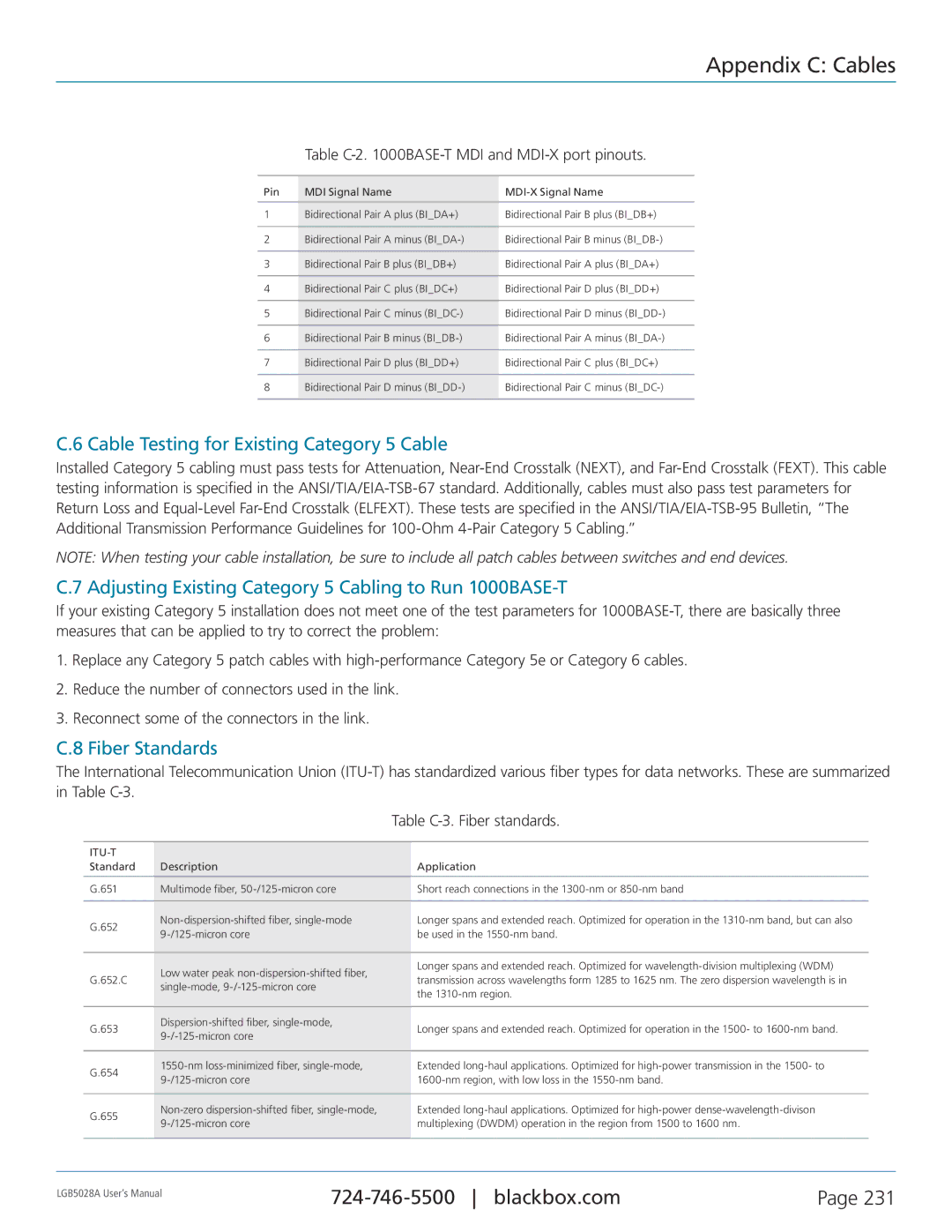
Appendix C: Cables
Table C-2. 1000BASE-T MDI and MDI-X port pinouts.
Pin | MDI Signal Name | |
|
|
|
1 | Bidirectional Pair A plus (BI_DA+) | Bidirectional Pair B plus (BI_DB+) |
|
|
|
2 | Bidirectional Pair A minus | Bidirectional Pair B minus |
|
|
|
3 | Bidirectional Pair B plus (BI_DB+) | Bidirectional Pair A plus (BI_DA+) |
|
|
|
4 | Bidirectional Pair C plus (BI_DC+) | Bidirectional Pair D plus (BI_DD+) |
|
|
|
5 | Bidirectional Pair C minus | Bidirectional Pair D minus |
|
|
|
6 | Bidirectional Pair B minus | Bidirectional Pair A minus |
|
|
|
7 | Bidirectional Pair D plus (BI_DD+) | Bidirectional Pair C plus (BI_DC+) |
|
|
|
8 | Bidirectional Pair D minus | Bidirectional Pair C minus |
|
|
|
C.6 Cable Testing for Existing Category 5 Cable
Installed Category 5 cabling must pass tests for Attenuation,
NOTE: When testing your cable installation, be sure to include all patch cables between switches and end devices.
C.7 Adjusting Existing Category 5 Cabling to Run 1000BASE-T
If your existing Category 5 installation does not meet one of the test parameters for
1.Replace any Category 5 patch cables with
2.Reduce the number of connectors used in the link.
3.Reconnect some of the connectors in the link.
C.8 Fiber Standards
The International Telecommunication Union
|
| Table | |
|
|
| |
|
|
| |
Standard | Description | Application | |
|
|
| |
G.651 | Multimode fiber, | Short reach connections in the | |
|
|
| |
G.652 | Longer spans and extended reach. Optimized for operation in the | ||
be used in the | |||
|
G.652.C | Low water peak | |
|
Longer spans and extended reach. Optimized for
G.653 | Longer spans and extended reach. Optimized for operation in the 1500- to | ||
|
| ||
|
|
| |
G.654 | Extended | ||
| |||
|
|
| |
G.655 | Extended | ||
multiplexing (DWDM) operation in the region from 1500 to 1600 nm. | |||
| |||
|
|
|
LGB5028A User‘s Manual | Page 231 | |
|
|
